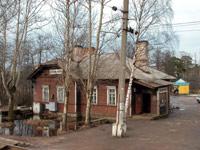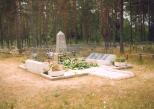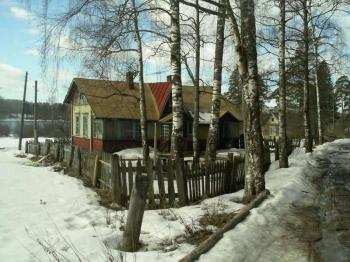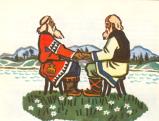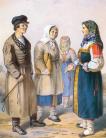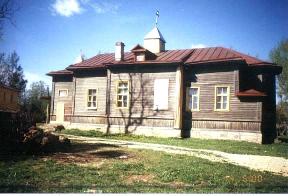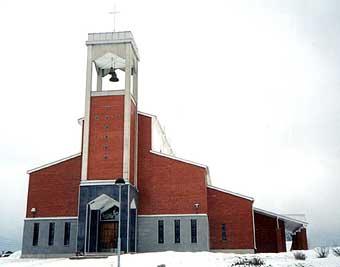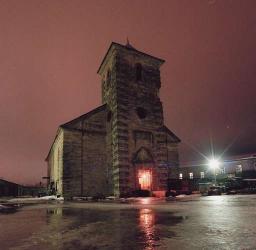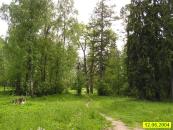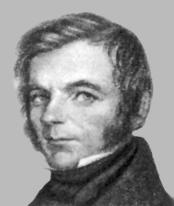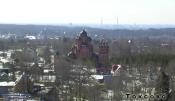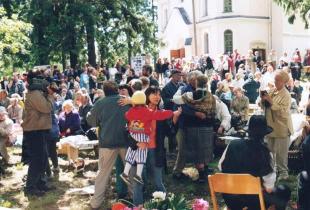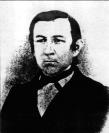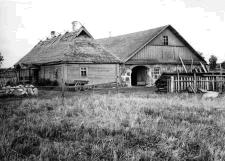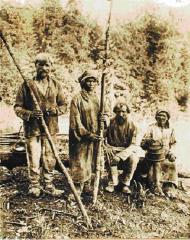Articles
/
Finns of Ingermanlandia
Finns of Ingermanlandia
Subject /
Ethnic culture/Ethnic communities
Subject /
Ethnic culture/Ethnic communities/
Subject /
Ethnic culture//
Finns of Ingermanlandia (Finns-Inkeri, Finns of Leningrad; old use - Chukhonets, Maimists; their own native names - Soumalaiset, Inkerin Suomolaiset) are an ethnic community. They speak local accents of the eastern dialects (the Baltic-Finnic subgroup of the Finno-Ugric branch of the Uralic language family. The religious Finns of Ingermanlandia profess Lutheranism (see the Evangelical Luteran Church in Igria). They live dispersedly in the western districts of the Leningrad Oblast (so-called Ingermanlandia). In 1897 in the S.Petersburg Gubernia there were 107 thousand Finns (country people); in 2002 in the Leningrad Oblast there were about 8 thousand Finns, in S.Petersburg there were 4 thousand Finns. The community was formed as a result of migration of Finns from the Karelian Isthmus and the regions of present East Finland to Ingermanlandia annexed to Sweden in 1617 and neglected after the Time of Troubles. In the 19th the ethnic groups such as Savakot and Evremeiset were stood out. The particular group (without a native name) is the Finns of the Kurgalsky Peninsula. The group differences disappeared at the turn of the 19th-20th centuries when the consolidation processes began to develop actively. The national intelligentsia connected to the Lutheran Church (see the Seminary for Teachers and Kusters of Kolpani Maliye Village, Putro Mooses) was of importance at that time. Finns of Ingermanlandia occupied themselves with farming, animal husbandry; since the 19th century some seasonal works have been developing. The main type of their settlements is a village. Finnish villages, which were on the south from the Neva River, had a street planning and the ones on the Karelian Isthmus (Vsevolozhsk District) consisted of some groups of houses ("settlements") located on the tops of the next hills ("a scattered planning"). Settling in the zone of contact with Izhora, Votes, Russians caused forming some cultural differences from the Finns-Suomi (the population of Finland). The Finnish knife (pukko) was a specific element of men's clothes. In the 19th - the beginning of the 20th century Finnish women wore mainly red and blue sarafans. National traditions were kept in the rites of celebrating Yegory's Day (St.George's Day) (the first sending the cattle out to pasture), Ivan's Day (John the Baptist) (see Juhannus), wedding rites (the rite of "smoking" during asking in marriage) etc. In the 1920-30s on the territory of the Leningrad Oblast there were national Finnish village soviets and Kuvaizovo (Toksovo) national district (the northern part of the present Vsevolozhsk District). Acts of repression and deprtation of the 1930-40s led to forming the Ingermanlandian diaspora in Karelia (in 2002 there were 14,3 thousand people) and Estonia. In the 1990s a part of Finns of Ingermanlandia emigrated to Finland. In 1988 the voluntary organization "Inkerin Liitto" ("Ingermanlandsky soyuz" ("Ingermanlandia Union") was founded , which occupies itself with keeping and developing the culture of this ethnic community.
Authors
Chistyakov, Anton Yuryevich
Persons
Putro, Mooses
Geography
Neighbouring Territories/Estonia
Neighbouring Territories/Finland
Historical Toponyms/Ingermanlandia (Ingria)
Topographical landmarks/Karelian Isthmus, the
Neighbouring Territories/Karelian Republic
Topographical landmarks/Kurgalsky Peninsula, the
Historical Toponyms/Kuyvazi National District, the
Topographical landmarks/Neva River, the
Historical Toponyms/Saint Petersburg Gubernia, the
Leningrad Oblast, the/Vsevolozhsk District
Bibliography
Гильди Л.А. Судьба «социально-опасного» народа. (Засекреченный геноцид финнов в России и его последствия. 1930-2002 гг.). СПб., 2003
Гадло А.В., Егоров С.Б., Верняев И.И., Чистяков А.Ю. Этнография Северо-Запада России. Южные окрестности Петербурга – Приладожье – центральные районы Псковщины. СПб., 2004., С. 16-88
Заднепровская А.Ю. Ингерманландские финны // Многонациональный Петербург. СПб., 2002, С.528-541
Мусаев В.И. Политическая история Ингерманландии в конце XIX-XX веке /В.И.Мусаев. – Изд. 2-е испр. и доп. – СПб.: Нестор-История, 2004. – 450 с.: ил., С.528-541
Мы живем на одной земле: Население Петербурга и Ленингр. обл. / Сост. и науч. ред. К. В. Чистов. СПб., 1992., С. 130-148
Прибалтийско-финские народы России. М., 2003., С.469-521
Inkeri. Historia, kanssa, kulttuuri. Helsinki, 1991, С.469-521
Смирнова Т.М. Национальность – питерские: Национальные меньшинства Петербурга и Ленинградской области в XX веке.-СПб.: Изд-во «Сударыня», 2002.-584 с.: ил., С. 402-431
Subject Index
"Inkerin Liito", a Finnish Public Society
Kolpany Teacher-Kuester Seminary
Mentioned in articles:
|
hidden
|
Ayramoiset, an ethnic group of Ingermanlandia Finns
The Ayramoiset (Ayramoiset, Evremeisy, Evrimeisy) is an ethnic group of the Finns of Ingermanlandia. Descendants of the migrants of the 17th century to Ingermanlandia from the region of Euryapyae on the Karelian Isthmus. The Ayramoiset kept archaic... more
|
|
|
hidden
|
Bolshaya Izhora, urban settlement
BOLSHAYA IZHORA, an urban settlement in Lomonosov District. Population: 3,800. Located on the southern coast of the Gulf of Finland, near the Bolshaya Izhora railway station of the Oranienbaum-Kalische branch. The Chornaya Rechka river (Izhorka in... more
|
|
|
|
hidden
|
Ethnic deportations
Ethnic deportations are forced resettlement carried out according to an ethnic signs. In 1935-36 in the Leningrad Oblast there were some activities on purging the zone of land with 22 kilometres wide at the border with Finland "from kulak and... more
|
|
|
|
hidden
|
Ethnic groups if the Leningrad Oblast
Ethnic communities of the Leningrad Oblast. The settled communities of people historically formed on the certain territory, having the common features of culture and self-consciousness expressed in the native name are called an ethnic community (or... more
|
|
|
|
hidden
|
Finno-Ugric nations
Finno-Ugric nations are ethnic communities speaking the languages of the Finno-Ugric group which is a part (together with the Samoyedic and Yukaghir groups) of the Ural (Uralic-Yukaghir) language family. Finno-Ugric nations have lived historically... more
|
|
|
hidden
|
Finns
Finns (old use - Chukhnas, their native name is Suomalaiset) is an ethnic community which is a part of the population of the Leningrad Oblast. In the world there are more than 5 million Finns. They are the main population of Finland (4,6 million... more
|
|
|
|
hidden
|
Finns - Inkeri, see Ingermanlandia Finns
reference
|
|
|
hidden
|
Folklore
FOLKLORE of folks living in the Leningrad Oblast (ref. Ethnic communities in Leningrad Oblast) is multilayer polyethnic heritage which appeared as a result of rich history of the region. One of the first people to study the Veps in the period of... more
|
|
|
|
hidden
|
Ingermanlandia
INGERMANLANDIA (Swed. Ingermanland, Rus. Izhora Land or Ingria), historic and cultural region in the western part of the Leningrad Oblast (Kingisepp, Volosovo, Lomonosov, Vsevolozhsk, Gatchina, Tosno, western part of Kirovsk Districts.) The western... more
|
|
|
|
hidden
|
Izhora (Izhora men)
Izhora (Izhoras, the own native name is Izurit) is an ethnic community. Their language is related to the Baltic-Finnic subgroup of the Finno-Ugric branch of the Uralic language family. Accorging to the most widespread version the Izhora separated... more
|
|
|
|
hidden
|
Kikerino, urban settlement
KIKERINO, an urban settlement in Volosovo District. Population: 2,000. It is situated at the Bolshiye Kolpany-Volosovo road. The name is probably related to the Baltic Finnish last name Kekki (Kekke.) The toponym K. is mentioned in Novgorod’s... more
|
|
|
|
hidden
|
Koltushi Rural Settlement
KOLTUSHI RURAL SETTLEMENT, a part of Vsevolozhsk District. Population: 9,000. In 1996–2005, it was an independent municipal entity Koltushi Volost, and since 1 January 2006 it has had the status of first-level municipal entity. It is located on the... more
|
|
|
|
hidden
|
Lomonosov District
LOMONOSOV DISTRICT. Area: 1990.8 sq. km. Population: 65,300. Established in 1927. L. D. comprises Bolshaya Izhora and Lebyazhye urban settlements and 140 rural localities. It borders St. Petersburg and Kingisepp, Volosovo, and Gatchina Districts of... more
|
|
|
|
hidden
|
Lutheran Church of St. Apolstle Peter (the village of Maliye Kolpany, Gatchina District)
Lutheran Church of Apolstle Peter (the village of Maliye Kolpany, Gatchina District), Finnish Church is placed at the cemetery (parish of Kolpany, it was founded in 1640). The Church for 680 seats was built from quarry stones in 1799–1800... more
|
|
|
|
hidden
|
Population
Population. According to the census of 2002 in the Leningrad Oblast there were 1669,205 thousand people; according to the estimate made on 1 July 2005 there were 1647,6 thousand people including the town dwellers numbering 1093,9 thousand people... more
|
|
|
hidden
|
Savakots
Savakots (Savakot, Savaki) is an ethnic group of Ingermanlandia Finns. They are descendants of the migrants resettled in the 17th century to Ingermanlandia from the province of Savo in Eastern Finland. The culture and dialect of Savakots were closer... more
|
|
|
|
hidden
|
Shapki, settlement
SHAPKI, a settlement in Tosno District. Population: 549. Located at Shapki railway station (branch connecting the settlement to Tosno Town.) Located at the Shapki Heights (their shapes remind caps, “shapki”, therefore the name) – kame hills reaching... more
|
|
|
|
hidden
|
Shyogren, Andrey Mikhaylovich (1794-1855), a scholar
Andreas Johan (Andrey Mikhailovich) Sjogren (1794-1855) was an ethnographer, linguist. In 1831 he became an academician of the Saint Petersburg Academy of Science. He was born in Finland in the family of a shoemaker. He studied in a grammar school... more
|
|
|
|
hidden
|
Toksovo, urban settlement
TOKSOVO, an urban settlement in Vsevolozhsk District. Population: 5,900. In 1920-49, it was a district center (before 1936, the adm. center of a Finnish ethnic district.) The toponym Toksovo (Finnish “Toksova”) is of a Baltic Finnish origin, and... more
|
|
|
|
hidden
|
Uhannus, a festival
UHANNUS, festivity. This festivity is well known among the Finns from pre-Christian times, it was celebrated on the day of Summer Solstice (the Day of Ivan – Finnish Uhannus). The Luthran church celebrates Uhannus on June 24th (public street... more
|
|
|
|
hidden
|
v. Sankt-Peterburg Gubernia, the
ST. PETERSBURG GUBERNIA, historic adm. and territorial unit of Russia. Established in 1708 by the decree of Peter I subdividing Russia into eight gubernias. It included the areas of the current Leningrad, Novgorod, Pskov, and Tver Oblasts, and... more
|
|
|
|
hidden
|
Vsevolozhsk District
VSEVOLOZHSK DISTRICT, a part of Leningrad Oblast. Area: 2945.4 sq. km. Population: 215,200. Adm. center: Vsevolozhsk Town. Comprises Sertolovo Town, six urban settlements (Dubrovka, settlement named after Morozov, settlement named after Sverdlov,... more
|
|
|
|
hidden
|
Yevropeus, Daniel (1820-18884), a scholar
David Emmanuel Daniel Europaeus (in Finnish - Taneli; in Russian - David Petrovich) (1820-1884) was a folklorist, archaeologist. Ethnographer. He was born in the family of a pastor in Olkkola Farmstead of the parish of Savitaipale of the Vyborg... more
|
|
|
|
hidden
|
|
hidden
|
|
hidden
|
|
hidden
|
|
hidden
|
|
hidden
|
|
hidden
|
|
hidden
|
|
hidden
|
|
hidden
|
|







